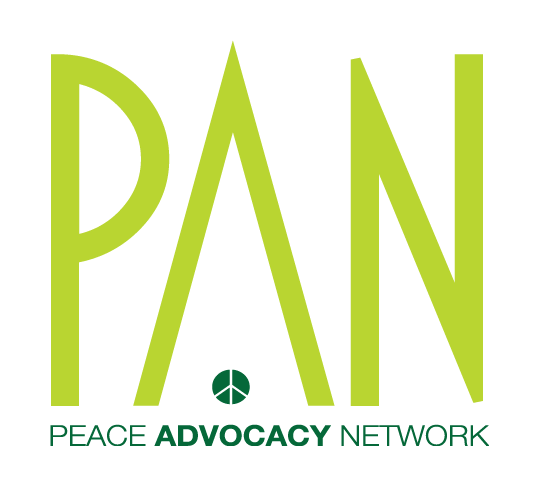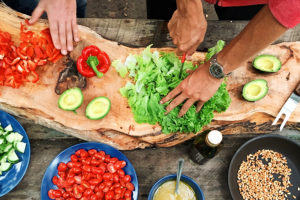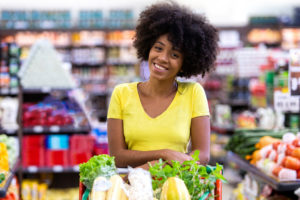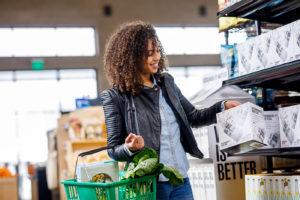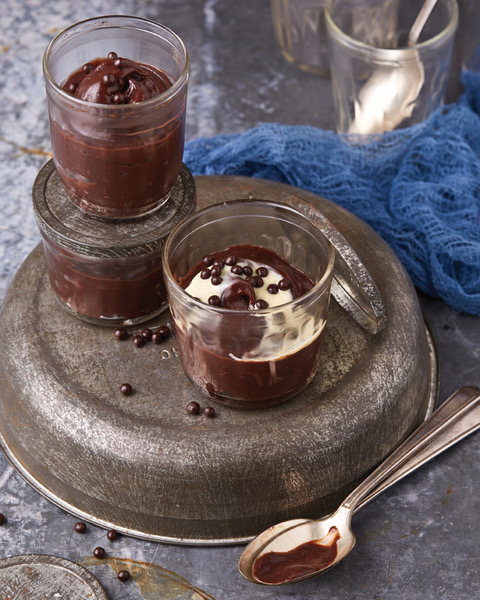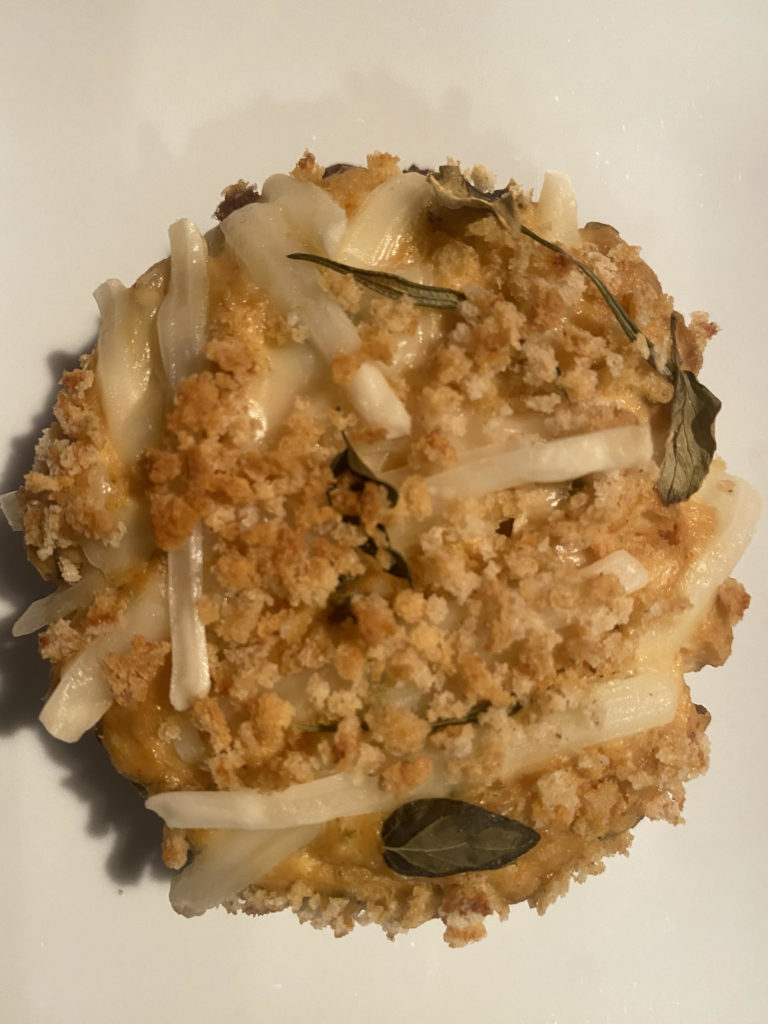Each month, one vegan saves:
Animal Lives
lbs of grain
Sq. Ft of forest
gallons of water
lbs of CO2
Going vegan can seem intimidating, but it doesn’t have to be hard.
Check out all the benefits of veganism below.
Approximately 10 billion domesticated animals and even more aquatic animals are used for food each year in the US alone. Millions more are used each year for their fur, silk, wool, feathers, skin (leather), tusks and horns.
All of these animals, whether used for dairy, eggs, flesh, or clothing products, meet with the same fate in the end: death at the hands of humans.
These animals are all forced to live their short lives at the mercy of humans whose main concern is profit. This is even true of animals who are raised on organic, free range or cage-free farms.
“HUMANE” ANIMAL PRODUCTS?
The use of the term “humane” tricks people into believing that there is a respectful, kind or humane way to use and kill animals. Most of the products labeled humane are barely different than their unlabeled counterparts. Even in the best circumstances, the animals are always at the mercy of their owners and the animals’ needs will always take a backseat to the industry’s need to make a profit.
Even on humane dairy farms, cows must be impregnated to produce milk (for her calf). Forcible and repeated impregnation is an industry standard even on “organic”, “humane”, “free range” and “family farms”. Male calves are of no interest to dairy farmers and are therefore quickly taken from their mothers and sold to produce veal and leather.
Most “cage-free” hens are never allowed outside and instead live confined inside barns (instead of cages) with thousands of other hens. Their beaks are painfully burned off. Male chicks who hatch are not useful to the industry (they cannot lay eggs and they haven’t been bred for their flesh), so they are suffocated, ground up, or tossed into the trash.
All of these animals are killed when they are no longer productive for the purposes of the “humane” farmers.
What about this seems humane to you?
GLOBAL WARMING & ENERGY USE
On most farms, animal manure and urine are stored in massive waste lagoons that emit toxic gases such as ammonia and beef methane. These gases make humans and animals in surrounding areas sick. Methane is a potent greenhouse gas, trapping approximately 30 times more heat in the atmosphere than carbon dioxide. It requires 2 to 10 times more energy to produce animal products than it does to produce the same number of calories from plant foods.
OCEANS & FISHERIES
Human consumption of fish is destroying ocean life. Common fishing methods such as trawling (dragging huge nets across the ocean floor to collect shrimp), long-line fishing, and fish farming destroy endangered species as well as the fish they are intended to catch. The world’s oceans are being depleted of fish at alarmingly rapid rates.
LAND USE & HABITAT DESTRUCTION
Pastures used for animal agriculture use more than 30% of the Earth’s entire land surface. Animal farms destroy woodlands and other natural habitats. In many states, grazing of cows and sheep has destroyed native grasses, causing soil erosion and lowering stream beds.
WATER ISSUES
About 75% of all water quality issues in the US are caused by animal farming. Manure and urine waste lagoons often break, leak, or overflow, sending dangerous germs, pollution and drug- resistant bacteria into water supplies. Water use for production of animal products is vastly greater than for plant foods.
The American Dietetic Association states that well-planned vegan diets are appropriate for individuals during all stages of the life-cycle including pregnancy, lactation, infancy, childhood, and adolescence and for athletes.
VEGAN NUTRITION
The key to a nutritionally sound vegan diet is variety. A healthy and varied vegan diet includes fruits, vegetables, plenty of leafy greens, whole grain products, nuts, seeds, and legumes.
PROTEIN
It is very easy for a vegan diet to meet the recommendations for protein as long as calorie intake is adequate. Strict protein planning or combining is not necessary. The key is to eat a varied diet. Almost all foods except for alcohol, sugar, and fats provide some protein. Vegan sources include: lentils, chickpeas, tofu, peas, peanut butter, soy milk, almonds, spinach, rice, whole wheat bread, potatoes, broccoli, kale…
FAT
Vegan diets are free of cholesterol and are generally low in saturated fat. Thus eating a vegan diet makes it easy to conform to recommendations given to reduce the risk of major chronic diseases such as heart disease and cancer. High-fat foods, which should be used sparingly, include oils, margarine, nuts, nut butters, seed butters, avocado, and coconut.
VITAMIN D
Vitamin D is not found in the vegan diet but can be made by the human body with exposure to sunlight. At least ten to fifteen minutes of the summer sun on hands and face two to three times a week is recommended for adults so that vitamin D production can occur. Food sources of vitamin D include vitamin D-fortified orange juice and vitamin D-fortified soy milk and rice milk.
CALCIUM
Calcium, needed for strong bones, is found in many foods commonly eaten by vegans. Although lower animal protein intake may reduce calcium losses, there is currently not enough evidence to suggest that vegans have lower calcium needs. Vegans should eat foods that are high in calcium and/or use a calcium supplement. Good sources of calcium include fortified soy milk or rice milk, collard greens, blackstrap molasses, calcium-set tofu, calcium-fortified orange juice, okra, turnip greens, soybeans, tempeh, almond butter, broccoli, bok choy, commercial soy yogurt… The recommended intake for calcium for adults 19 through 50 years is 1000 milligrams/day. *Note: it appears that oxalic acid, which is found in spinach, rhubarb, chard, and beet greens, binds with calcium and reduces calcium absorption. Calcium is well absorbed from other dark green vegetables.
ZINC
Vegan diets can provide zinc at levels close to or even higher than the RDA. Zinc is found in grains, legumes, and nuts.
IRON
Dried beans and dark green leafy vegetables are especially good sources of iron, better on a per calorie basis than meat. Iron absorption is increased markedly by eating foods containing vitamin C along with foods containing iron. Soybeans, lentils, blackstrap molasses, kidney beans, chickpeas, black-eyed peas, Swiss chard, tempeh, black beans, prune juice, beet greens, tahini, peas, bulghur, bok choy, raisins, watermelon, millet, kale are good sources of iron.
Animal agriculture industries are a threat to vulnerable humans in multiple ways:
While 800 million people on the planet starve, the bulk of corn and soy grown in the world is being fed to animals used for food.
Using animals for food is a major contributor to global warming, which causes droughts, floods, extreme temperatures, and other environmental disasters. These disasters have the potential to devastate billions of human lives, according to the UN.
Routine antibiotic use in animal agriculture leads to the proliferation of drug-resistant infections. These infections kill about 70,000 humans per year in the US alone.
Employees in slaughterhouses and other animal farming operations are often immigrants, minorities, and economically vulnerable people. These workers are subjected to deplorable conditions, including filth from the animals’ bodies, long hours, and line speeds that lead to worker injuries.
A Human Rights Watch report details common incidents of injury and deaths resulting from the common conditions in the meatpacking and poultry industry. Horrific deaths noted from OSHA documents include a worker’s death when a “hog-splitting saw” was activated, a worker being pulled into a conveyor and crushed, and workers losing legs or hands while performing cleaning tasks.
